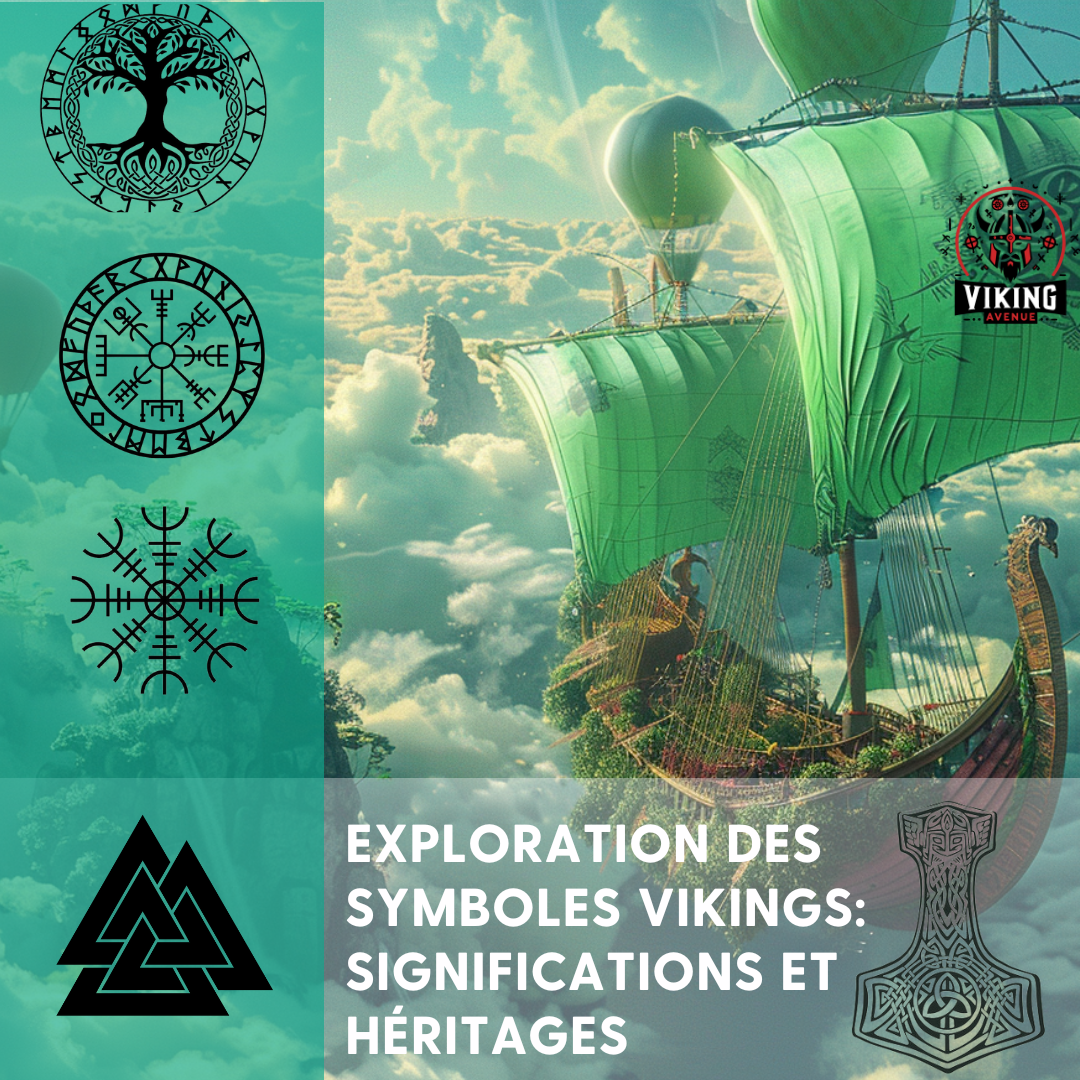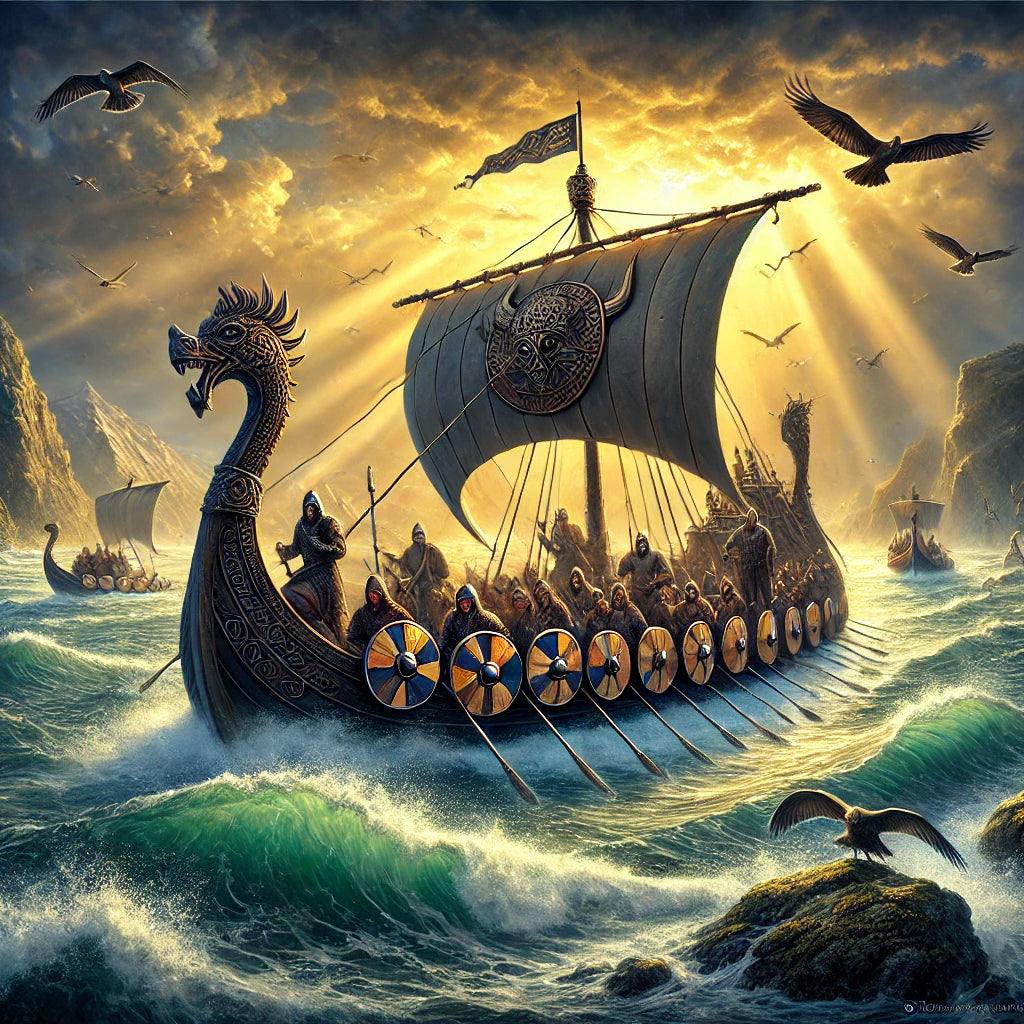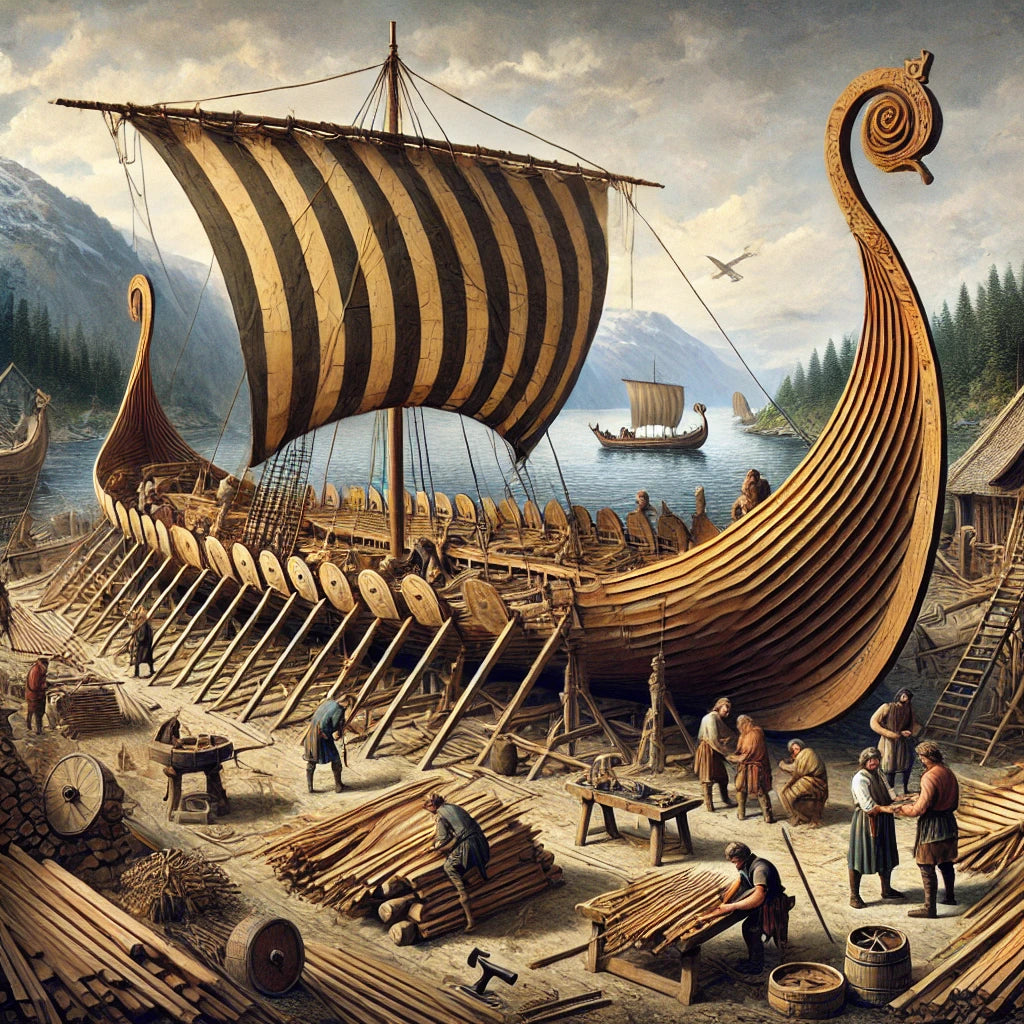
Viking shipbuilding: the art of the longships
Viking shipbuilding is an important legacy of the Scandinavian sea. Longships, with their dragon-shaped prows and sterns, were very famous. These ships were long and fast, helping the Vikings explore and conquer new lands.
Building longships required careful selection of materials. Wood, especially oak, was essential for its strength. Carpenters used iron nails and ropes to reinforce the ship. Wool sails were lightweight and wind-resistant.
The clinker building technique was an important innovation. It allowed for the creation of a strong hull. Longships, even when built for war, were also useful for trade and cultural exchange. This underscores the importance of Viking ships in history.
Key points
- Longships were ships designed for speed and maneuverability.
- Oak, reinforced with wrought iron nails, was the main material.
- Woven wool sails were lightweight and wind resistant.
- The "clinker building" technique ensured the robustness of the ships.
- Longships were used for both war expeditions and trade.
Origins and History of Viking Drakkars
Viking longships are famous from the Viking Age, from 793 to 1066. They demonstrate Viking shipbuilding skills. These ships transformed medieval Europe.
They evolved for raiding, trade, and exploration. Their influence is still visible today.
https://youtube.com/watch?v=KDUrl0jgBHw
Role of Drakkars in explorations
Longships were versatile. They could navigate the sea or narrow rivers. This enabled the Vikings to reach North America and the Middle East.
They sailed far to North Africa as conquerors and traders. The Gokstad and Skuldelev demonstrate their diversity.
The first models of drakkars
The first longships, like the Oseberg, were masterpieces. They were made of wood carved from logs. These ships were strong and beautiful.
They used oak, pine, and ash. Their clinker construction made them ideal for the sea.
"The term 'drakkar' to designate Viking ships in French appeared in 1840 in the work of Augustin Jal."
| Name of the Ship | Use | Load Capacity |
|---|---|---|
| Skeid | War | Varies depending on the model |
| Snow White | War | Varies depending on the model |
| Knarr | Trade | Up to 16 tons |
Materials Used for Construction
The Vikings carefully selected the materials used to build their ships. They primarily used wood, chosen for its unique qualities. These woods were ideal for longships.
Choice of wood and other materials
Oak was widely used, known for its durability and water resistance. Forestry and maritime officials carefully selected these woods.
- Oak: The predominant wood in naval carpentry, offering strength and longevity.
- Twisted timber: Isolated trees providing curved timber, essential for connecting the ship's components.
- Template: The process of cutting and shaping pieces of wood for a specific use in construction.
- Bark tar: Used to waterproof the hulls of longships, ensuring their buoyancy.
The Vikings also used iron for nails and tar for waterproofing. These materials worked well together to build strong ships.
Strengthening techniques
Longships were built using a technique called "clinker building." Wooden planks were overlapped and reinforced with iron nails. This gave the ships great flexibility and strength.

- Overlapping boards: Ensuring a strong and flexible structure.
- Use of iron nails: Reinforcing the union of the boards and increasing durability.
- Tar Application: Protects the hull against water and weather.
| Type of Wood | Use | Properties |
|---|---|---|
| Oak | Framework and hulls | Robustness, durability |
| Twisted Wood | Curved structures | Flexibility, resistance |
| Curved wood | Structural connections | Solidity, adaptability |
Material preparation and reinforcement techniques were key to the Vikings. They combined know-how and local resources to create powerful longships.
Viking Shipbuilding Techniques
The Vikings have been building ships for over 4,000 years. Their method, called "clinker building," was unique. It involved laying the hull planks one on top of the other.
This technique gave the boats great flexibility and strength, which made them so efficient at sea.
Clinker building explained
Lap planking allowed the planks to be stacked. Each plank overlapped the next. This method was used by the Vikings.
It made ships light and strong. The Vikings used oars to propel them. With the introduction of iron rivets, around 3 AD, ships became even stronger.
Crafts and transmission of techniques
Viking shipbuilding was passed down from generation to generation. Master craftsmen were well-versed in wood, ensuring the quality of the longships.
Historians, biologists, and archaeologists are now helping to understand these constructions. Wood was crucial to the Vikings. This tradition still fascinates researchers.
| Element | Description |
|---|---|
| Oars | Introduced for more efficient propulsion than paddles |
| Iron rivets | Used from 3 AD to reinforce planks |
| Drink | Main material, chosen for its specific properties |
| Transmission | Craft knowledge passed down from generation to generation |
Distinctive Characteristics of Drakkars
Viking longships are masterpieces of maritime engineering. They have unique features that demonstrate their functionality and symbolism. These ships were often built of oak at first. However, the Norwegians and Swedes switched to pine around the 10th century.
Stylized bow and stern
The bow and stern of Viking longships were symmetrical and often decorated with dragons. These dragons served to intimidate enemies and protect the crew. The longships could change direction easily, which was useful in battle or exploration.
The longships were also recognizable by their square wool sails and shields. These shields protected and demonstrated Viking strength.
Advantages of the symmetrical hull
The symmetrical hull of the longships aided in speed and maneuverability, crucial for Viking expeditions. This design, thanks to the clinker technique, made the ships fast and sleek.
Longships were 55 feet long and 8 feet wide on average. They could navigate in shallow waters thanks to their shallow draft. This made it possible to visit the coasts and conduct rapid raids.
| Characteristic | Description |
|---|---|
| Initial production | Oak |
| Later production | Pine |
| Midsized | 55 feet long, 8 feet wide |
| Draft | 0.5 to 1 meter |
| Rowing capacity | 6 to 20 rowing benches, up to 41 people |
| Sails | Square wool sails |
| Construction | "Clinker" technique |
Viking Navigation and Instruments Used
The Vikings were expert navigators. They explored and colonized new lands, such as Iceland, in the 9th century. Their exploration reached North America around 1000 AD, thanks to Leif Erikson.
The Vikings navigated by the stars and celestial bodies. They used a sun compass and a sundial to find their position. Iceland spar helped them find the sun even under clouds.
Their journeys covered vast distances, from the Baltic Sea to the Caspian Sea. They created trade routes with Europe, exchanging furs for silks and silver.
The Vikings faced many challenges, such as storms and unpredictable winds. But their ingenuity helped improve medieval navigation. Their navigational tools remain a subject of interest to historians.
FAQ
What role did longships play in Viking explorations?
Longships were essential to the Vikings, allowing them to navigate the open seas and narrow rivers. These fast and maneuverable ships helped the Vikings conquer Europe between the 9th and 11th centuries.
What were the first models of drakkars and their characteristics?
Early longships, like the Oseberg, were sturdy and well-designed. They could carry a large load and had a beautiful appearance. These ships were ideal for sailing at sea and on rivers.
What materials were used in the construction of longships?
Wood, especially oak, was the main material. The Vikings also used tar for waterproofing and iron nails to strengthen the wood.
What is the "clinker building" construction technique?
This technique involves overlapping wooden planks to form the hull. It gives ships great flexibility and strength. Iron nails reinforce the structure.
How were Viking shipbuilding techniques passed on?
The techniques were passed down from generation to generation. The Vikings were well-versed in wood and shipbuilding. Their expertise was passed down through family traditions.
What were the distinctive features of the longships, particularly their bow and stern?
Longships had prows and sterns with dragons. This made it easy to change direction. They also had decorated sails and shields on their sides.
What advantages did the symmetrical hull of the drakkars offer?
The symmetrical hull made the longships fast and maneuverable. This was crucial for Viking expeditions. The ships could sail forward and backward without turning.
What instruments did the Vikings use for navigation?
The Vikings used several methods and tools to navigate. They knew the position of the stars and the sun. Their mastery of celestial navigation was impressive. They also used crystals to find the sun, even when hidden.
